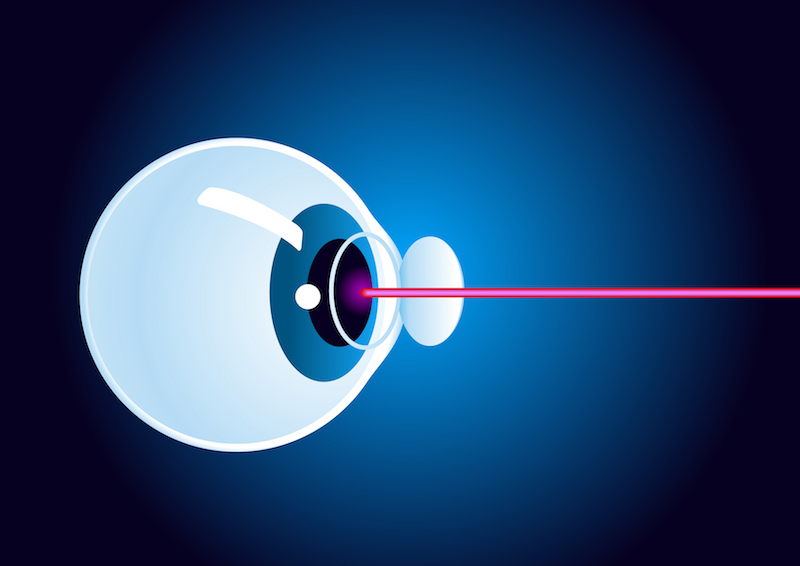Do you have trouble reading the small print on medicine bottles or food labels? Has driving at night become a nearly impossible task? Are you having difficulty writing out cheques or filling out forms?
If you answered yes to any of these questions, you may have a cataract in one or both of your eyes.
A cataract is a cloudy area that forms in the normally clear lens of the eye. It is the most common cause of vision loss in people over the age of 40 and a leading cause of blindness worldwide. In Kenya, cataracts are the largest cause of avoidable blindness, making up 43% of all cases of blindness.
Check for cataracts
Using a mirror, take a close look at your pupil, which is the black dot in the centre of your eye. This is where cataracts form. If you notice clouding anywhere in your pupil, that is a cataract. If your pupil is completely black, it is cataract-free.
There are different types of cataracts, each categorised based on where and how they develop in the eye. The three main types include:
- Nuclear cataracts, which develop in the middle of the lens, causing the centre of your eye to become yellow or brown. This type is usually associated with ageing.
- Subcapsular cataracts, which appear as a cloudy area at the back of the lens. If you have diabetes or take steroids, you have a high chance of developing this type of cataract.
- Cortical cataracts, which are characterised by white, wedge-like cloudy areas on the outside of the lens, and which work their way to the centre of the eye in a spoke-like fashion. Diabetes and ageing are risk factors for this form of cataracts.
If you have difficulty spotting the signs, ask a friend or family member to help out.
Recognise the symptoms
Cataracts aren’t always easy to see and often develop slowly and silently. Over time, the condition can start to affect your vision, and you may experience:
- Blurred or cloudy vision.
- Double vision.
- Trouble seeing at night.
- Changes in the way you see colour.
- Increased sensitivity to glare.
- Seeing halo-like glows around bright lights.
- Progressive near-sightedness.
- Sudden and frequent changes in your glasses or contact lenses prescription.
These symptoms may also be a sign of other eye problems. If you have one or more of these symptoms, see your doctor immediately.
How your doctor diagnoses cataracts
Your doctor will perform an eye exam to assess your vision and check for cataracts. This includes an eye chart test to measure how well you can see at different distances, and tonometry to measure the pressure inside your eye. Your doctor will also put drops in your eyes to widen your pupils. This makes it easier to check your retina and optic nerve for damage. Your sensitivity to glare and perception of colours may also be checked.
Protect your peepers:
- Go for regular eye exams. Have your eyes tested once every two years until the age of 50, and yearly after the age of 50. If you have a history of eye problems or a medical condition that increases your risk for eye disease, like diabetes, you may need to get your eyes tested more often. The earlier cataracts are detected, the better they can be treated and prevented from progressing.
- Don’t ignore symptoms. Rather be safe than sorry.
- Keep chronic conditions under control. Take your medication as prescribed and on time.
- Wear sunglasses to protect your eyes against harmful UV rays.
- Eat foods rich in carotenoids, like kale, raw spinach, and other leafy dark green vegetables. Carotenoids can help maintain healthy eyes, and protect against eye diseases.
- Boost your Vitamin E intake. This essential vitamin is a powerful antioxidant and agent against cataracts. Good sources of Vitamin E are almonds, sunflower seeds, and fish.
- Stop smoking. High levels of free radicals in cigarette smoke can damage cells, including those in the lens of the eye. This can increase your risk for cataracts.
Worried about your eye-sight? Speak to one of our doctors by signing into the Hello Doctor app, on what your treatment options are.
References:
- http://www.rajkotlasik.com/how_to_check_cataract_self_test
- http://www.visionaware.org/info/your-eye-condition/cataracts/different-types-of-cataracts/125
- http://www.allaboutvision.com/conditions/cataracts.htm
- https://nei.nih.gov/health/cataract/cataract_facts
- http://www.webmd.com/eye-health/cataracts/health-cataracts-eyes#1
- http://www.healthline.com/health/cataract#Overview1
- http://www.hollows.org/au/what-we-do/where-we-work/africa/kenya

